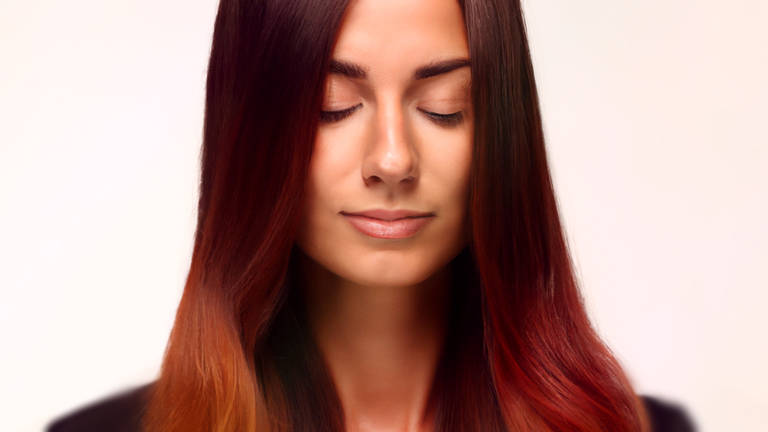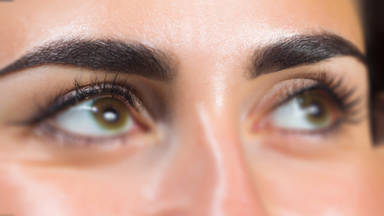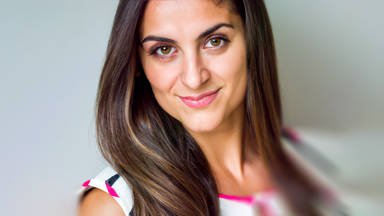
Mahogany is a delightful combination of brown and red. Typically, red makes up the majority of the composition, with brown colors making up the minority. These two colors are blended together, and occasionally, copper color is also added. As with the dark wood it is named after, mahogany hair is most commonly described as having a reddish brown hue. However, it can also have a very faint violet tint as well.
It is possible to create mahogany hair colors either warm or cool, depending on your choice of combinations. Using a warmer red will give your mahogany shade a little more richness, while adding a little violet will make it skew cooler. In any case, there is no skin tone that doesn't look good with mahogany hair color.
The mahogany dye color can be achieved by mixing various dye products. The color catalog should be the first thing you consult. The meaning and perception of colors varies from person to person. You must decide whether you want the resulting hair dye color to lean towards red or brown.
It is also important to consider the person's skin type and color before selecting a dye. Most skin colors and facial shapes are suited to warm colors. Using an oxidation and dye that is suitable for your hair color if you have natural hair color is important. In most instances, you will end up with a darker mahogany color, unless you have orange hair or a hair base that is level six color, where you will receive a lighter mahogany dye.
To achieve a light mahogany hair color, a person with dark hair can use a six percent oxidant to lighten their hair to its natural color level 10 before applying a mahogany dye.
My general recommendation is to consider using the number five mahogany or chocolate brown number six in most hair dye catalogs, since it has always yielded safe and impressive results. I always turn to this color when I have no specific idea what to choose, and it has never disappointed me. No matter which brand you use, the chocolate color number six will almost always match.
A dye that does not contain ammonia yields a darker color, whereas a dye that contains ammonia is usually results in a lighter color. A small amount of ammonia is present in most dyes. In general, it is better to avoid uncommon variations. You can choose a safe purple variation or use a base purple dye. The dye can also be made to have a copper background by adding a small amount of copper dye to the mix.
if you prefer a color with a high red background color, you can choose one of the 4.66 colors from your catalog which contains a majority of red pigment. It is also possible to skip using this dye if the person prefers to not have red in their dye.
For the purpose of this article, we will assume that your basic or foundation color is mahogany color number five. If you wish to use this combination, you should mix together half a tube of mahogany color number five, and a tube of chocolate brown color number six.
Next, you can choose to apply a purple color, which is an optional step. The color you want in the catalog should have purple in it, so you should add it according to that.
Continuing with the copper color. Copper is generally considered a good background color for hair dye, and it can also add some reflection to your hair, too. It is up to you whether you like copper in your hair or not. There is no right or wrong answer to this question. This color can even be skipped entirely.
You can then proceed to your red dye. People who prefer red dye should add some red dye at this point. It is possible, however, to skip the red color if the person prefers a more prominent brown hue.
The next step involves adding an oxidant to your bowl, mixing it with the dye, and applying it to the hair. When it comes to color mixing, there are some ground rules to follow. It is not possible to mix the colors, apply them to the hair, and then finish the process. As soon as the color has been applied and covered for ten minutes, the hair should be gently pulled.
As soon as you have completed this, you need to determine what color spectrum you will add to the mix in order to achieve the desired results. You might want to add some purple, red, or copper dye to your mix to make your hair stand out, if you need to.
It is important that the colors are not stuck to the brush when mixing. The mixture must be thoroughly mixed in order to achieve a unified mix. In both dyeing and bleaching, it is best to use an oxidant of six percent. The oxidant should be added once the product has been thoroughly mixed. Your six percent oxidant can also be used to lighten your hair by a few shades. To finish the process, wash, rinse, and dry the hair before applying mahogany dye for the last time.
It is important to maintain your radiance once you have dyed your hair mahogany. We recommend that you only wash your hair with a color-protecting shampoo. You should also use a pigment-depositing conditioner every week to ensure that red tones remain vibrant.









